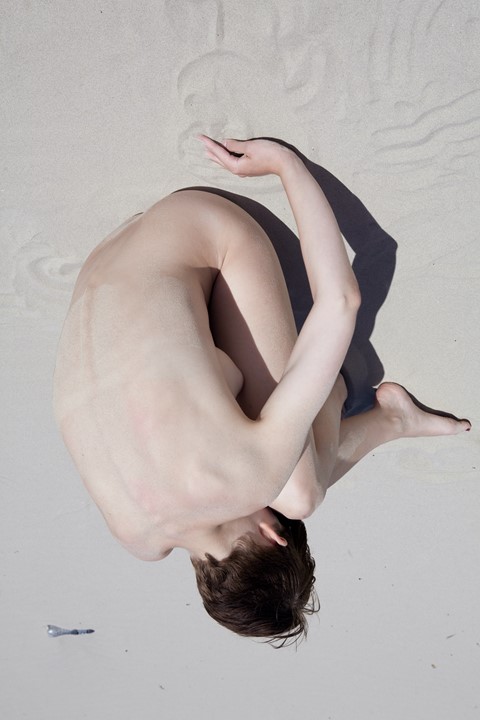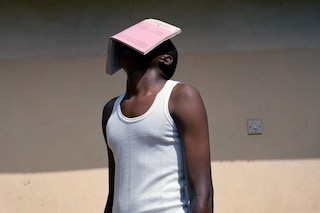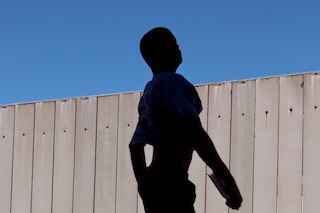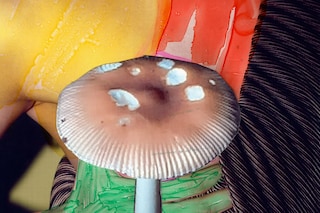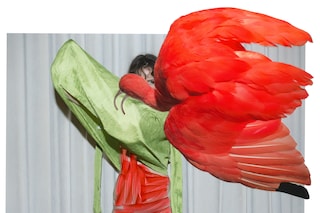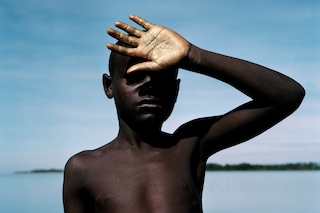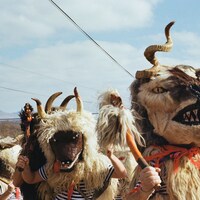A major retrospective in Paris brings together three decades of Sassen’s fashion and fine art photography exploring sexuality, death, dreams and rebirth
There’s a black and white self-portrait taken by Viviane Sassen in 1990 when she was still a student at Utrecht School of the Arts: she’s naked in her bathroom, her face is concealed by the camera, and one leg is slung over the side of the bathtub at a right angle. Private and real, it’s a beautiful image in which the internationally acclaimed Dutch artist is much like any other young woman exploring her body in the mirror. Three decades on, Sassen's vibrant artistic universe might seem miles away from that simple bathroom shot, though a search for meaning through the lens of her camera has remained a constant. This unmistakable world is a place where contorting bodies, eerie abstraction and brilliant colour converge; where big ideas of sex, death, and dreams play out in scenes full of tension and intrigue.
A vast new retrospective opening next week at Maison Européenne de la Photographie in Paris and book of the same name – PHOSPHOR: Art & Fashion 1990-2023 – is set to celebrate three decades of Sassen’s remarkable multimedia output, marking her largest exhibition to date. Staged across several rooms and encompassing more than 200 works, some of which have never been displayed before, it presents a journey through Sassen’s evolving practice from her days as a student through to today, mixing seminal series such as Umbra and Lexicon with wildly creative fashion imagery for publications like Dazed, AnOther and Purple.
As the show opens, Sassen speaks on delving into her 30-year archive, her irritation with the male gaze, and how her images can act as “portals to other worlds”.
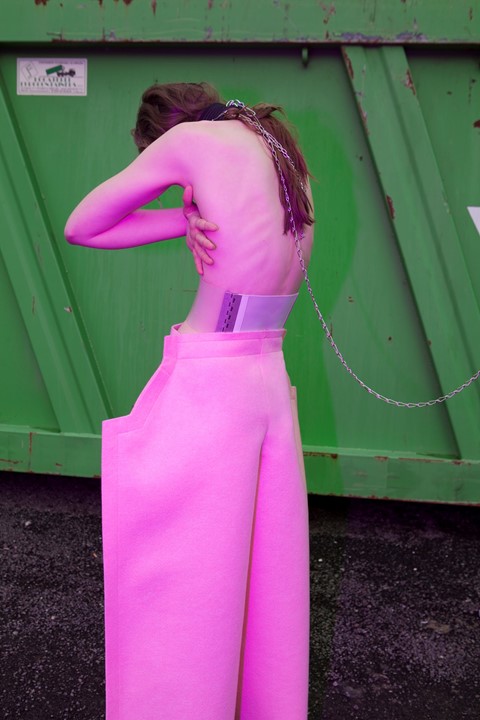
Congratulations on the exhibition and book. How are you feeling in the lead-up to the opening?
Viviane Sassen: Excited. I’ve been working on the exhibition for so long. I was actually hoping that it would be a good opportunity to clean up my archive but, in the end, I was just too busy editing and I haven’t been able to throw anything away.
What’s it like going through your archive? Is it something you enjoy doing or do you find it to be an emotional process?
Viviane Sassen: Both things. Some of it is emotional, some of it is very enjoyable – and some of it is boring too.
I want to start by asking you about the title, Phosphor. It’s the same name as a 1991 work which opens the book [a colourful nude painting]. Why did you choose it for your retrospective?
Viviane Sassen: It’s weird, I don't really don’t know exactly where the word comes from but I know that it has been with me for a very long time. When I was about 19 or so, I was kind of already in love with the word. Then, when I was in art school we had an assignment to design something as if it were our own brand, and I chose Phosphor as the name of mine. I just love the symmetry of the word. It means something that can radiate light by itself, which I also love.
“Those early self-portraits were a way to kind of regain the power over my own body and my own image” – Viviene Sassen
The show includes your early self-portraiture shot in the 1990s. You’ve described these images as a rebellion against the male gaze. Can you talk a bit about these works?
Viviane Sassen: I started studying fashion. I grew up in a small town in the east of Holland, and I was drawn to fashion as it was so romantic in a way – so absolutely out of reach. When I was studying, I realised that making clothes didn’t really interest me that much. At the same time, I began modelling and working with photographers, and I thought, ‘Oh, actually, that’s what I want to do.’
Back then, most of the photographers I worked with were men. This kind of male gaze irritated and confused me. They would say things like, ‘You have to make love with the camera’ or, ‘Pretend that you are blowing away little feathers.’ So, you know, my mouth would be more sexy or whatever. I was still very shy and exploring my own sexuality, so I took the camera – this tool of power – and pointed it at myself. Those early self-portraits were a way to kind of regain the power over my own body and my own image.
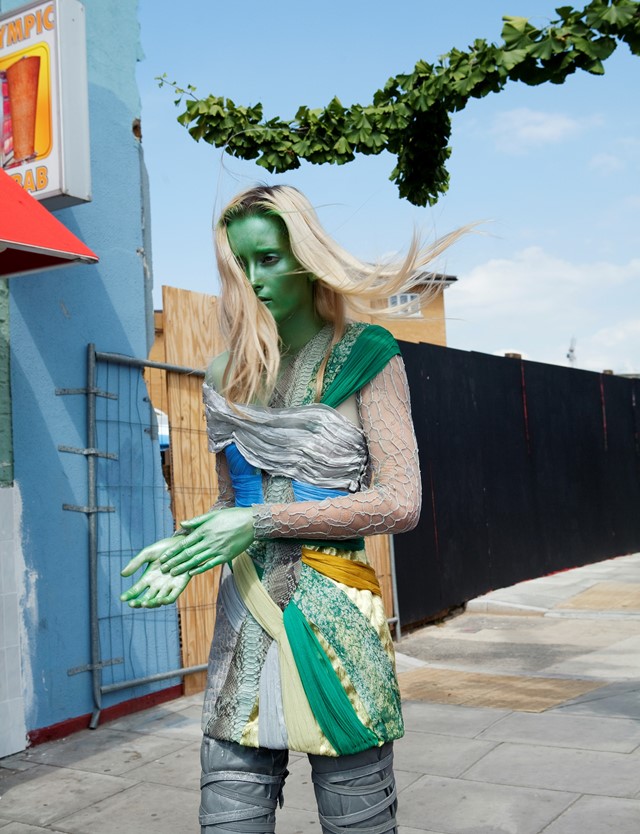
While the book opens with your early self-portraits, the exhibition opens with images taken in Africa. I know you lived in Kenya until you were five and have spoken about how these early years have shaped your practice as an artist.
Viviane Sassen: I think it made a huge impression on me. At that age, you experience everything for the very first time. I almost feel like that's how you get programmed, or it’s kind of your blueprint. My mind was saturated with light, colour and smells. I often refer to that time – I was four or five – as the age children go through this phase of magical thinking. [My work is] somehow also connected to that: to this kind of magical world.
What was it like returning there to take photographs?
Viviane Sassen: When I went back to my village in Kenya as a photographer in the 2000s, I realised that the image of Africa in the media was quite limited – it was either hunger and disaster, mostly photographs in grainy black and white, or National Geographic kind of photography. I realised working there as a photographer didn’t necessarily have to be documentary shots, but that I could stage my pictures.
I have a very strong feeling about [those images] because it was the first time I felt like I did something as a photographer that I hadn‘t seen before. I wouldn‘t do the same pictures today, because I think the world has changed and I‘ve become much more aware of my position as a white photographer. Debates about representations of the Black body are very, very complex. While I wouldn‘t make the same pictures now, I‘m still fine showing them. I know back then I worked with integrity to the best of my abilities with what I knew at the time.
“I always see pictures and my own work as kind of like mirrors that reflect back what is already inside of you. But also as portals to other worlds, other places, other thoughts” – Viviane Sassen
One of my favourite things about your work is the physicality of your compositions, where bodies take on beautifully strange shapes. Can you talk a bit about your approach to depicting the body?
Viviane Sassen: I think it started really young. My dad was a doctor and I think the body was always kind of present. I was always interested in the weirdness of the body. [When I was young] I remember making shapes and sculptures in the mirror, just being amazed by my own body.
When I started photographing, I discovered that I was always drawn the most towards the images that didn‘t show the face when I was editing. Those images were more mysterious. We are all so trained to look at faces and read emotions, but I think if you don't see the face, the person becomes more like a universal idea. It’s easier to see yourself.
I guess there‘s an idea that approaching the body as a sculpture is somehow cold or objectifying, but that‘s not necessarily true.
Viviane Sassen: There can be a lot of emotion in the body without showing the face. It can show sorrow or despair, power or lust. I think the body can express all those things.
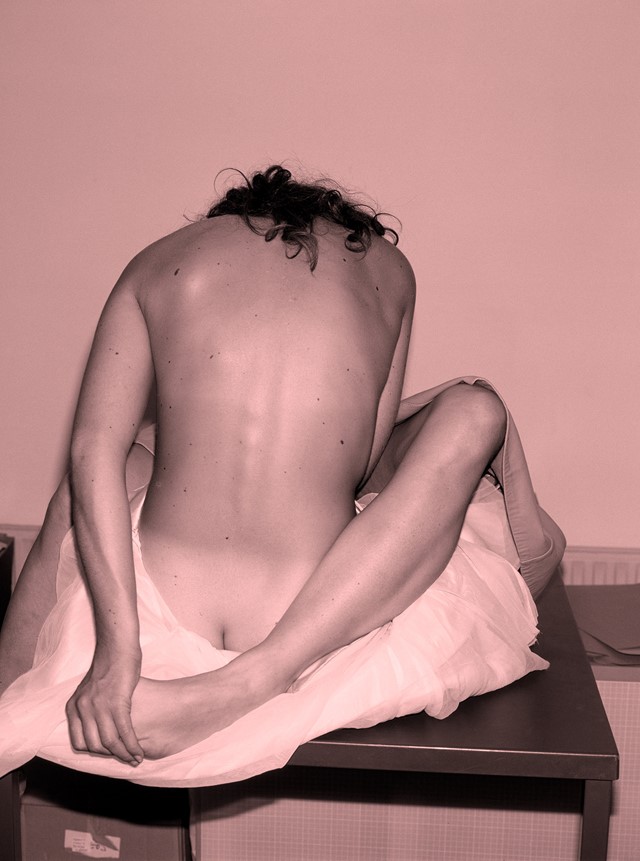
The exhibition traces your career-long interest in sexuality, death, dreams and rebirth – some of life’s most powerful forces. Can you talk a bit about the themes your work wrestles with?
Viviane Sassen: The same themes are occurring in my work over and over again. I think it’s always finding a kind of balance between opposites in a way: chaos and order, light and shadow. I mean, it’s very basic – it's about life and death in the end.
Much of your later work is really experimental and surreal. What brought on this more abstract way of working?
Viviane Sassen: It started with this project Umbra that I did years ago [in 2014] – it means shadow in Latin. It was a mourning process of revisiting my father’s death. My dad ended his own life when I was 22. Years later, I did this project and I felt that it was kind of reliving or processing his death through my work. It was this whole investigation of the shadow. It was a lot of soul-searching and then, afterwards, when I finished that project, I felt liberated somehow. I think that made me much lighter and I also think that my work often is, and for many artists, like a catalyst. It can be a kind of therapy.
So you find your work cathartic?
Viviane Sassen: To make work is a great way to move through things. After this Umbra series, I felt this kind of new freedom to just experiment. I started painting and drawing on my pictures and doing much more collage … I just love colour and working with inks. It’s just kind of a magic thing. It’s also just great to be able to make something which is a unique object, that really excites me.
What do you hope visitors take away from the show?
Viviane Sassen: I haven’t really thought about that. I always see pictures and my own work as kind of like mirrors that reflect back what is already inside of you. But also as portals to other worlds, other places, other thoughts. I hope that people will be inspired.
PHOSPHOR: Art & Fashion 1990-2023 will be running at the MEP from October 10 2023 until 2024 February 11.
Join Dazed Club and be part of our world! You get exclusive access to events, parties, festivals and our editors, as well as a free subscription to Dazed for a year. Join for £5/month today.
